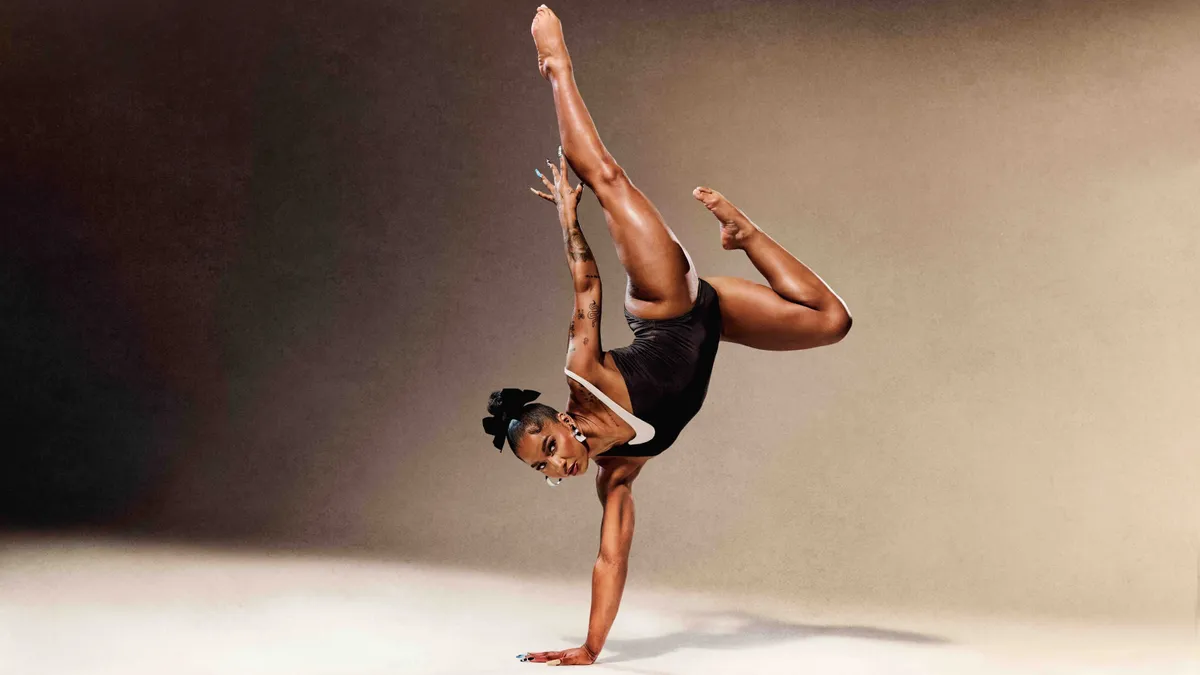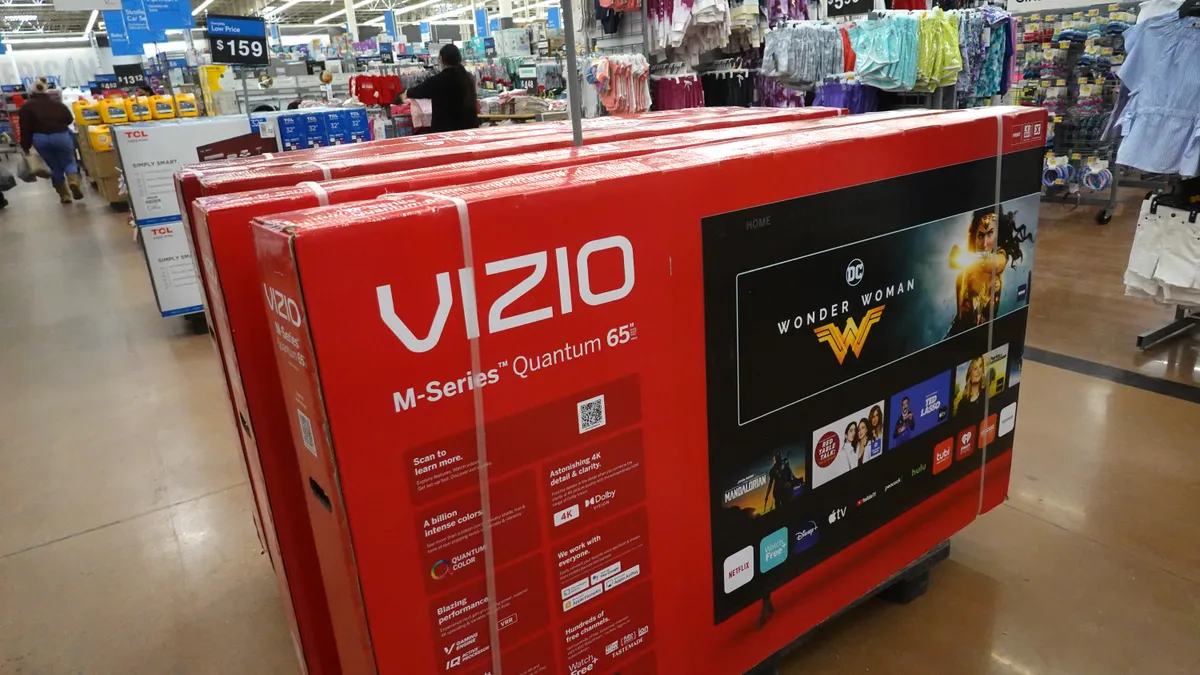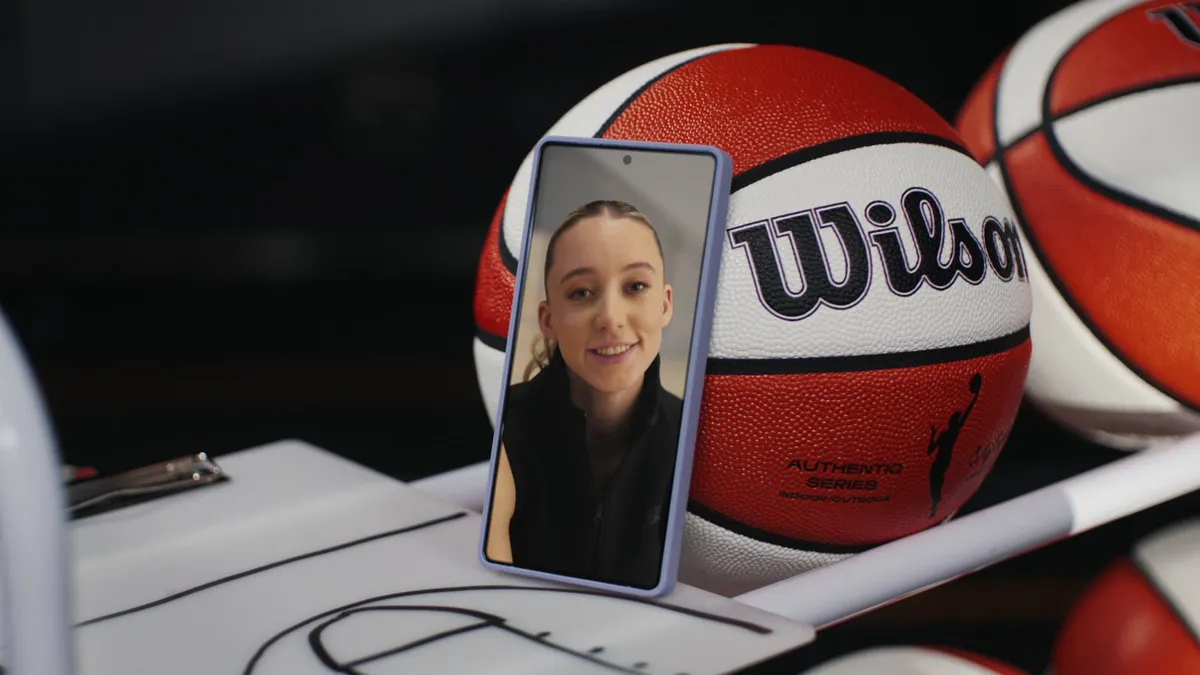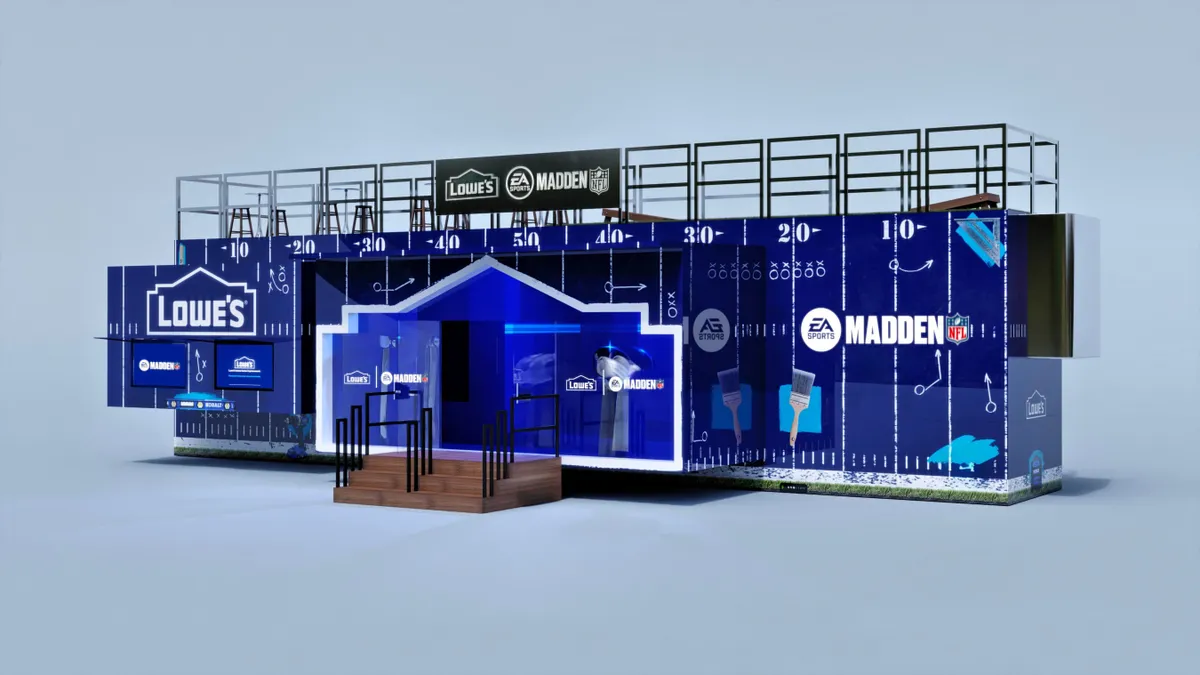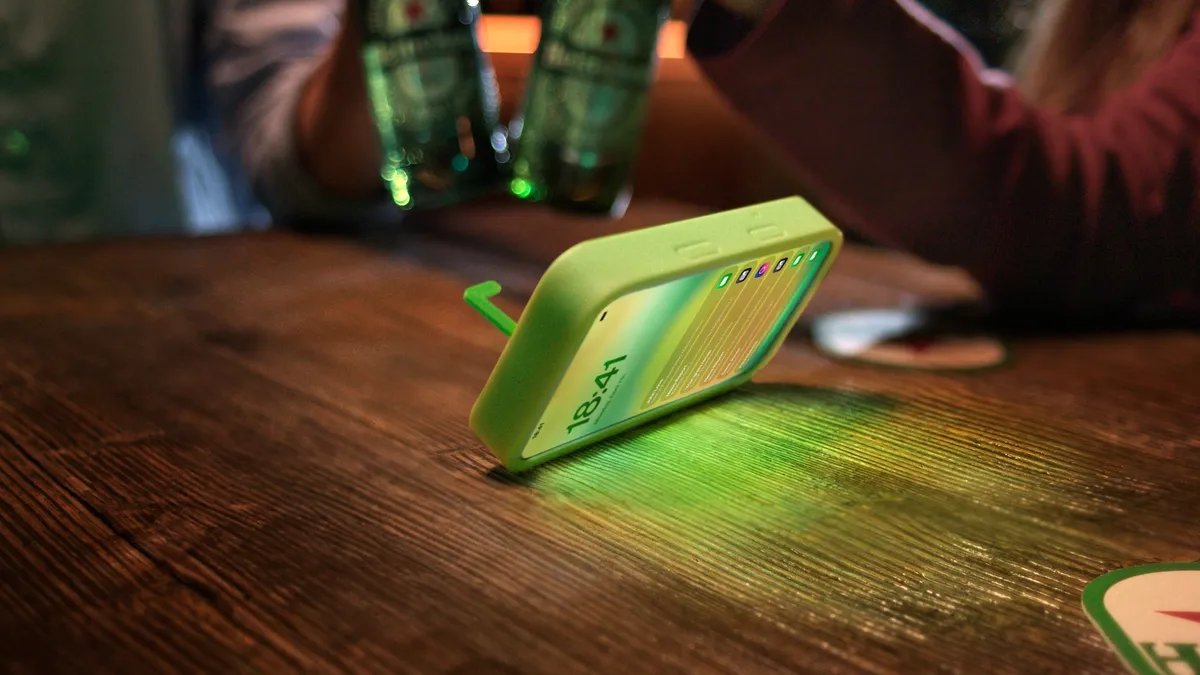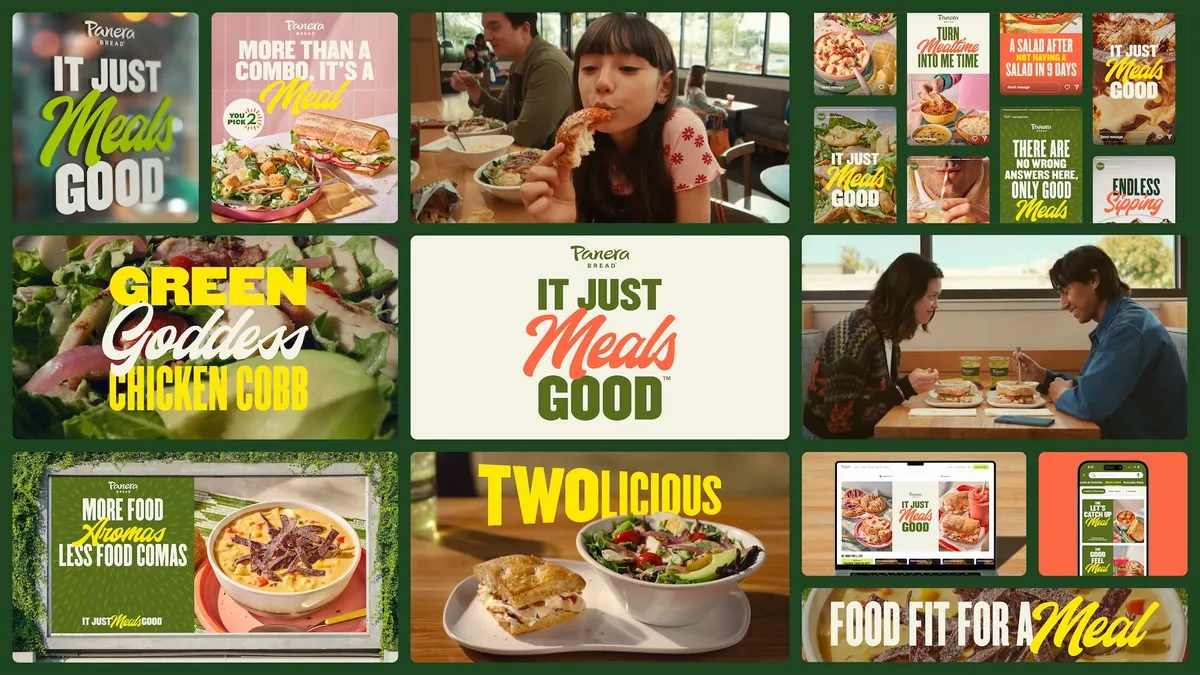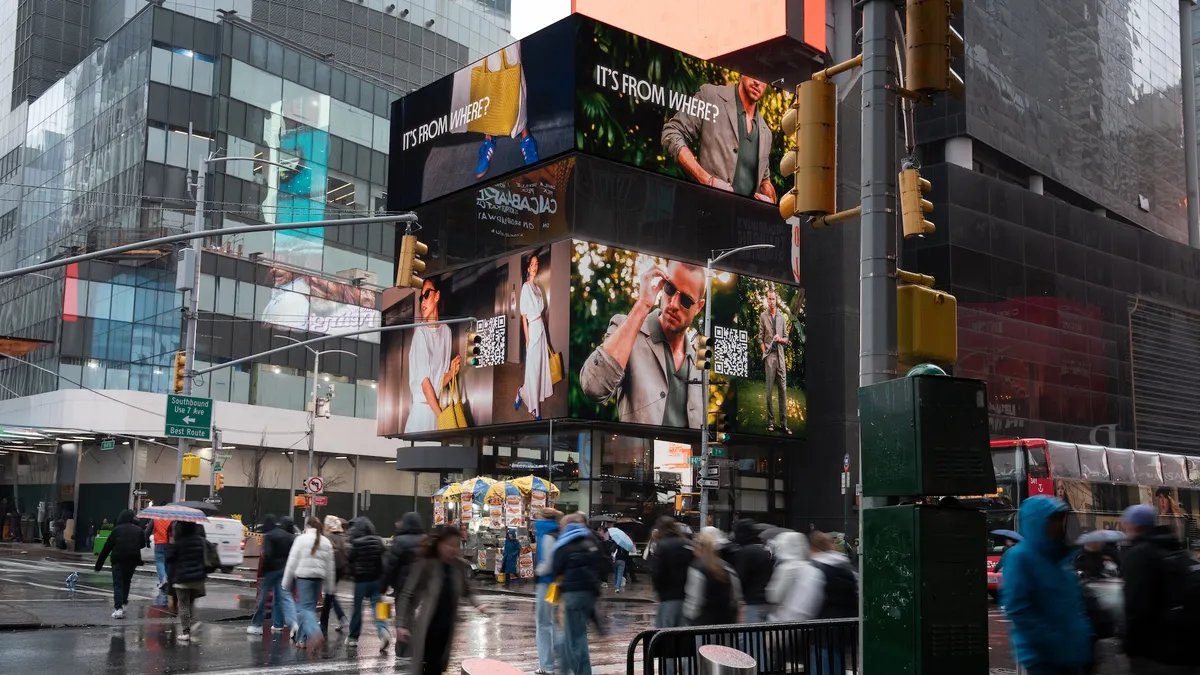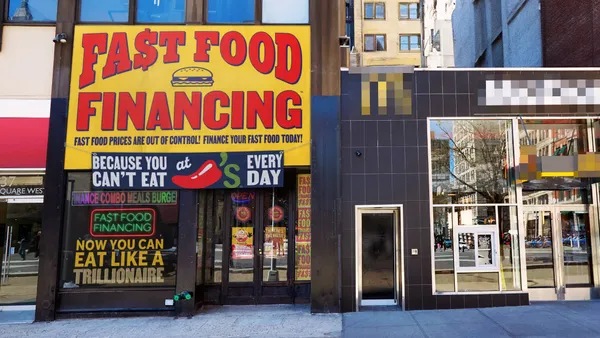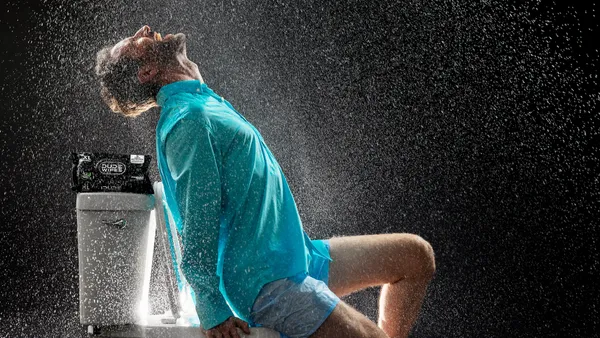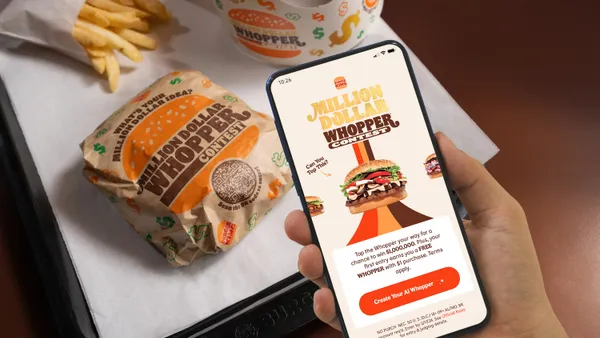Live sports remains a reliable and growing market for advertiser spend — to the tune of about $61 billion in 2024 — as brands look to get in front of consumer eyeballs. But with big brands dominating ad spend for major sports leagues like the NFL and NBA, smaller brands are forced to reach farther afield to find dedicated sports fan bases, an approach personal care brand Dude Wipes scores high in.
In the last few years, Dude Wipes has sponsored both a NASCAR race and a match at WWE’s WrestleMania. The brand in January became an official partner of the Professional Bowlers Association (PBA) and went viral last month with pin sweepers that carried “clears instead of smears” messaging. Before that, the brand caught the attention of hockey fans with messaging on dasher boards at the NHL’s 4 Nations Face-Off that punned off hockey terms with bathroom jokes (“protect your crease”).
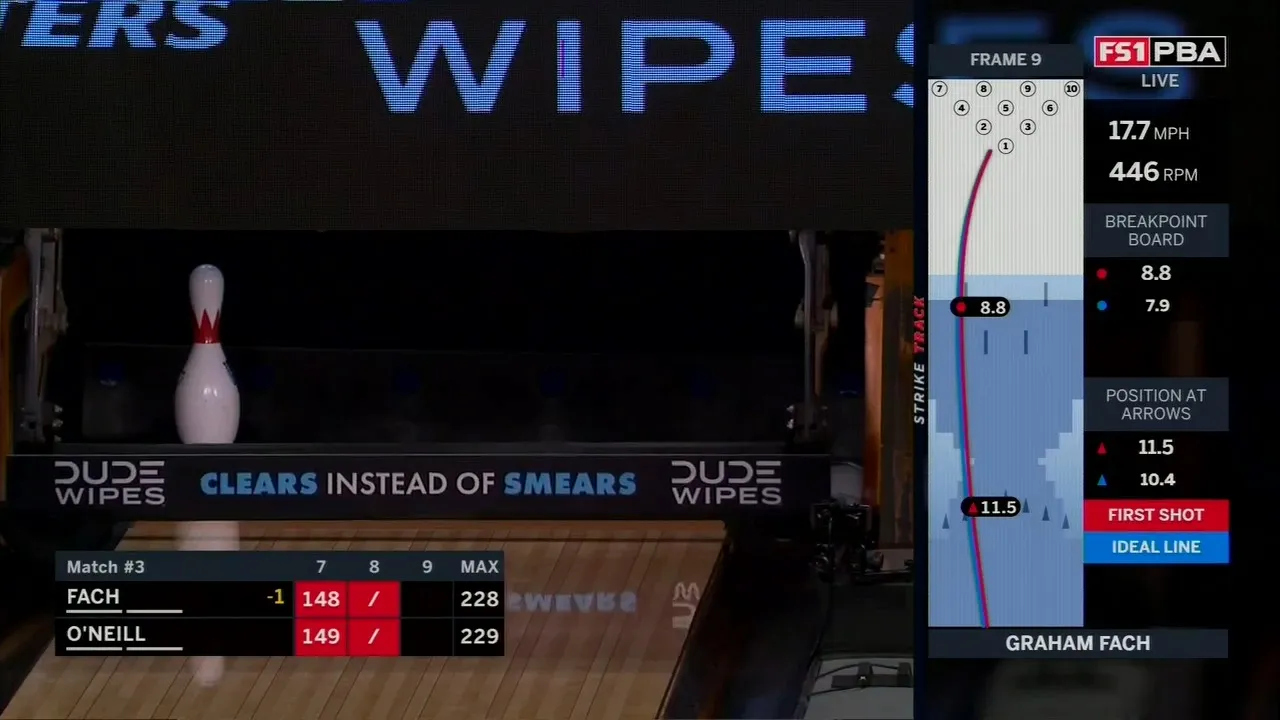
“Perry Ellis just did a logo slap, and nothing against them, that's their thing. They have a lot more money to spend than me, so I need to stand out more,” said Dude Wipes Co-founder and CMO Ryan Meegan of the NHL ads, some of which aired during a championship game viewed by 10 million people. “We were really lucky along the way to press the right buttons at the right time, and we're always looking to do that.”
Pressing the right marketing buttons — often by relying on toilet humor-fueled virality — has been crucial for the CPG disruptor. Launched in 2012 by three college graduates who used to buy baby wipes in bulk from Sam’s Club, Dude Wipes scored a “Shark Tank” investment in 2015 and now sees $200 million in annual sales.
Marketing Dive spoke with Meegan about the brand’s “secret sauce” to going viral, how its approach to creative and media have evolved as the brand has grown and how the brand is experimenting with CTV ads via Amazon.
The following interview has been edited for clarity and brevity.
MARKETING DIVE: Has Dude Wipes’ brand positioning evolved as the brand has grown?
RYAN MEEGAN: A lot of our original mindset and strategy has not changed a ton. From the outset, we figured if we're going to be convincing people to wipe their butts differently and talking about one of the most secretive, most taboo parts of the body, we needed to be funny and authentic. This isn't something that could be talked about seriously or created in a boardroom with a bunch of suits.
When we dove into making the brand and doing marketing we just stuck with funny bathroom humor. We think of Dude Wipes as just another friend in the room of a group of friends congregating and talking bluntly and brashly. We found no matter how young or old, a good bathroom joke strikes everybody the same way.
What elements of the marketing have changed?
What we have found with growing budgets and growing sandboxes where we can play is there are certain areas where we need to tone it down a little bit more versus where we can still be our super blunt selves.
Examples of that would be linear TV. We just started our first mass media campaign in 2024, and quickly, networks were like, “Yeah, you can't do that. You can't say that.” So it's really been a fun but frustrating learning experience in that regard, a little bit of growing pains, of finding that happy medium for the linear mass-media spectrum. How do we still be ourselves and get our humor and authenticity across, but not cross any lines, and get to a point where they're comfortable airing our content. But we still can have fun on social media. We still have fun with our content creators and short-form digital.
How would you characterize the brand’s approach to seeking viral, earned media?
We love “news jacking,” if you will. We all have access to way too much information about each other and about the world, and there's some poop-related incident going on daily or at least weekly. We jump all over those things as quickly as we can, send out care packages to those people, try to drum up some earned media, and always try to be a relevant and consistent part of everyday conversation. In a more planned or semi-planned way, we look for areas where we can do lightning strikes, like popping into UFC or the Preakness [horse race].
That grittiness and those one-off lightning strikes will never change. We're always looking for those, and can't wait for the next one, whatever that may be. It's a mix of staying true to our roots with that scrappy stuff and [having] more consistent mass media that we now have the budgeting to do to hit millions of people and create consistent awareness on a year-round basis.
Part of our secret sauce is that people are going to talk about us, and the “dudeness” is the magic. We try to maintain that magic and that connection with people, and make people laugh, get them curious about who we are and ultimately convert. But I'm always on the lookout with my team for those opportunities that pique our interest and are right up our alley, [so] we can drum up some noise. Instead of just spending a few advertising dollars to create a few impressions, we want to get ten times the impressions.
How has the media mix changed as your retail presence has grown?
We have a healthy trade budget that's part of our overall marketing budget, and that goes to support our big retail partners Amazon, Walmart, Target, Kroger and Instacart. We play ball for those retailers.
In terms of media, there's a really interesting dynamic going on right now with linear versus streaming and programmatic, connected TV. We're running a pretty sizable test right now with Amazon, serving their connected TV and streaming TV audiences through Prime and other avenues. It's higher CPM, but we have a little more control over who the content is served to. Then we're also going to get some consumer reporting on the back end as well, and be able to see some conversion rates, whereas linear, obviously, is kind of a big black hole.
We're also kicking off a huge podcast blitz, spending multiple seven figures for the first time in the life of the company. We feel really strongly about aligning with different podcast hosts that are very trusted by their listeners. That’s where people these days are choosing to consume their content.
Linear is always going to play its part for the low CPM and the mass reach, and we're invested heavily in it. There's no doubt. But there's some ancillary dollars that we're playing with in these other spaces, just to see if the engagement is a little bit better.
What do you see in the consumer demographics of a brand that has made the word “dude” central to the company?
We landed on the name Dude Wipes because it's a contagious word in American vernacular. We started this, as guys, to enlighten guys that you should be cleaner and more hygienic. We knew that women would appreciate it as well. We were not dumbfounded but very surprised to see some stats a couple years ago, and it's continued to be consistent, that our users are actually 50% women, 50% men. We think that women are buying them for the household. I think it goes back to the fun nature of our brand, that we have not turned them off, and they think it's funny and cool too. Women are on board with it as well.
In terms of pleasing everybody, it's never going to happen if you try to be everything to everybody and nothing to nobody. We really are unapologetically ourselves. We know there's going to be haters out there. There are going to be people that think it's stupid, or we've been on these “unnecessarily gendered products” lists and it really doesn't bother us. We’re always going to have those naysayers, which is fine with us.





